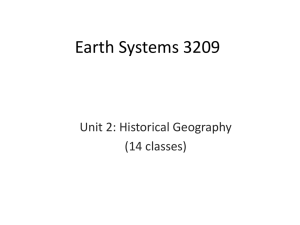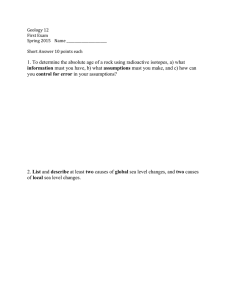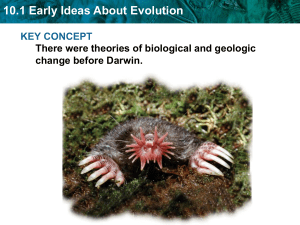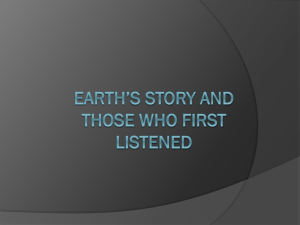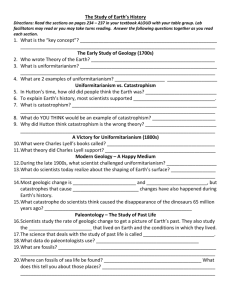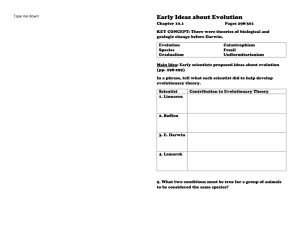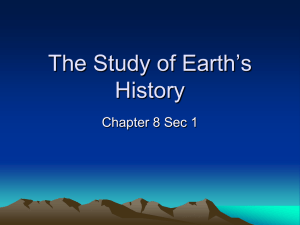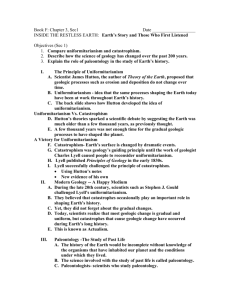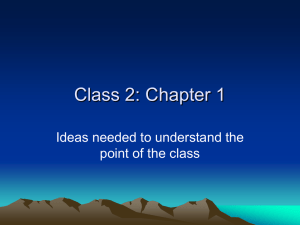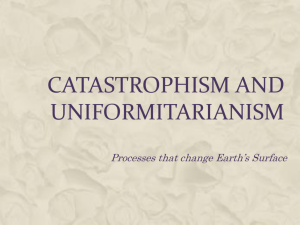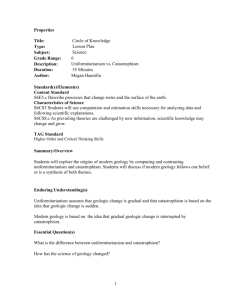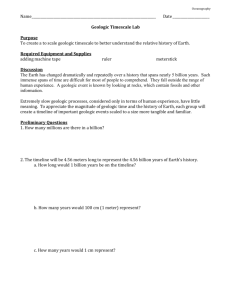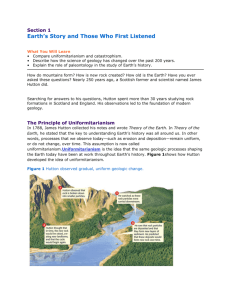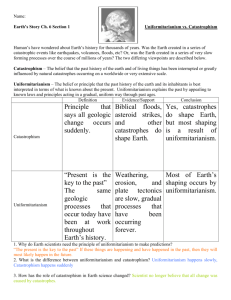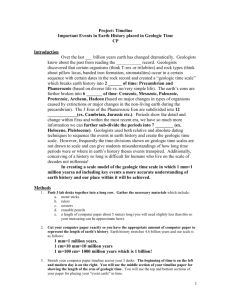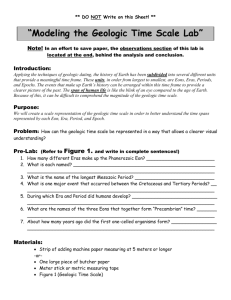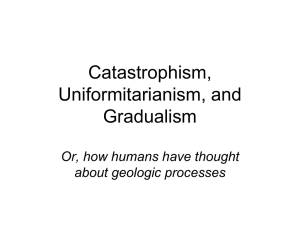Uniformitarianism v. Catastrophism
advertisement
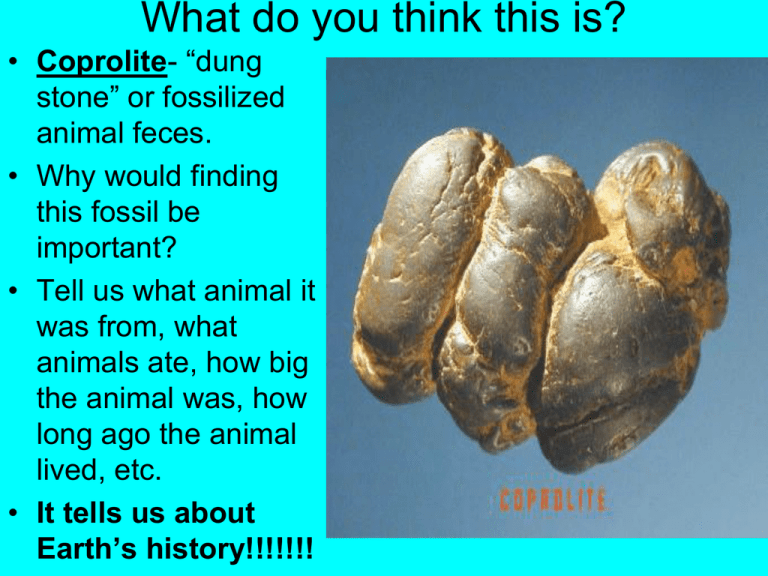
What do you think this is? • Coprolite- “dung stone” or fossilized animal feces. • Why would finding this fossil be important? • Tell us what animal it was from, what animals ate, how big the animal was, how long ago the animal lived, etc. • It tells us about Earth’s history!!!!!!! Partner Activity • 1. Working with a partner, your goal is to identify all the information that rocks and/or rock layers can tell us. • 2. You will use Ch. 6 in your book to help you do this. • 3. You will have about 5 minutes to generate at least 5 answers. What can rocks and rock layers tell us? • On your piece of paper, make a timeline of your life. Your timeline should begin with your birth and end with the year 2010. In between these years, record 5 of the most important events in your life. After making your timeline begin reading Ch. 6 Section 1 on Page 134. • On your timeline, besides your birth, what was the earliest event you recorded? • Do you perceive time as going by fast or slow? • Geologic Time Earth’s Story • For 1000s of years humans have wondered about Earth’s history. • 2 main view points: 1. the Earth was shaped suddenly and 2. the Earth was shaped slowly over billions of years. : Greatest Discoveries Uniformitarianism vs. Catastrophism • Catastrophism- principle that states all geologic change occurs suddenly • Evidence- Biblical floods, asteroid strikes and other catastrophes created mountains, canyons, and seas. Uniformitarianism vs. Catastrophism • Uniformitarianism- principle that states the same geologic processes shaping Earth today have been working throughout Earth’s history. • Evidence: Weathering, erosion and other geologic processes happen slowly. Therefore the Earth must have been shaped slowly. Conclusion • Earth has been shaped by a combination of catastrophism & uniformitarianism. • Most geologic change is slow & gradual. • But catastrophes have contributed to shaping Earth.
